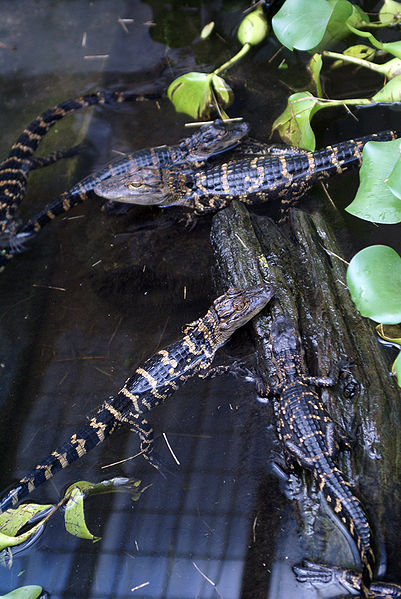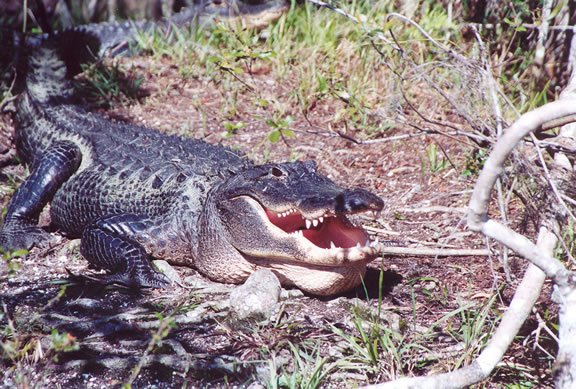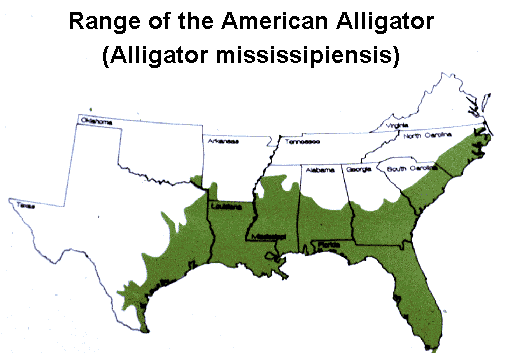 |
Canku Ota
|
 |
|
(Many Paths)
|
||
|
An Online Newsletter
Celebrating Native America
|
||
|
October 1, 2009 - Volume
7 Number 10
|
||
|
|
||
|
American Alligator
Alligator missippiensis |
||
| DESCRIPTION American alligators (Alligator mississippiensis) inhabit the southeastern United States. Once a federally listed endangered species, American alligators have recovered in many areas. The species is still federally listed as threatened because it looks like the American crocodile, which is endangered. The species belongs to the order Crocodylia and the family Alligatoridae. HABITAT
Sometime during late June or early July, females lay between 20 and 60 eggs. The hard-shelled, white eggs are about 3 inches long and resemble goose eggs. The mother defends the nest against predators throughout the incubation period, about 65 days. When the eggs are ready to hatch, the mother alligator digs into the nest mound, opens any eggs that have not hatched and carries the young down to the water. Females sometimes aggressively defend their young for more than a year. FEEDING Mother alligators that are killed or removed from the area cannot defend their nests or young, and the hatchlings often are doomed. If the young escape predation and can find enough food, they may grow between 3 and 8 inches in length yearly. When they reach lengths of about 6 feet, they are considered adults. RESEARCH
DID YOU KNOW?
RANGE
SAFETY INFORMATION
ADVICE
TO REMEMBER |
|
|
||
|
|
||
| Canku Ota is a free Newsletter celebrating Native America, its traditions and accomplishments . We do not provide subscriber or visitor names to anyone. Some articles presented in Canku Ota may contain copyright material. We have received appropriate permissions for republishing any articles. Material appearing here is distributed without profit or monetary gain to those who have expressed an interest. This is in accordance with Title 17 U.S.C. Section 107. | ||
|
Canku Ota is a copyright ©
2000, 2001, 2002, 2003, 2004, 2005, 2006, 2007, 2008, 2009 of Vicki
Barry and Paul Barry.
|
||
 |
 |
|
|
The "Canku
Ota - A Newsletter Celebrating Native America" web site and
its design is the
|
||
|
Copyright ©
1999, 2000, 2001, 2002, 2003, 2004, 2005,
2006, 2007, 2008, 2009 of Paul
C. Barry.
|
||
|
All Rights Reserved.
|
||
 BREEDING
BREEDING

